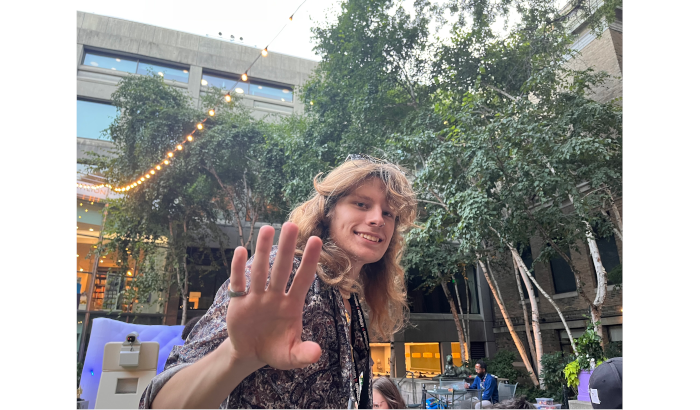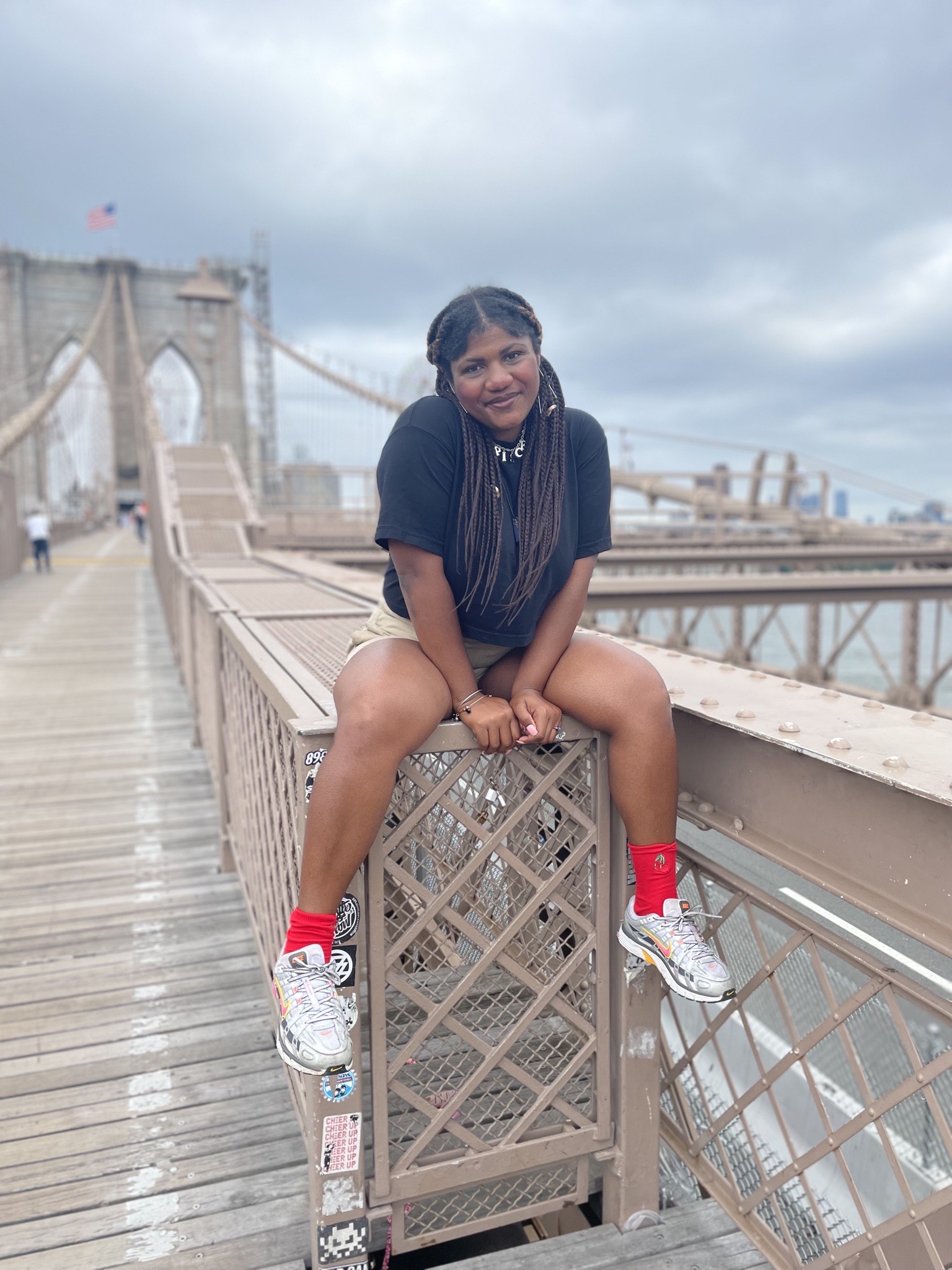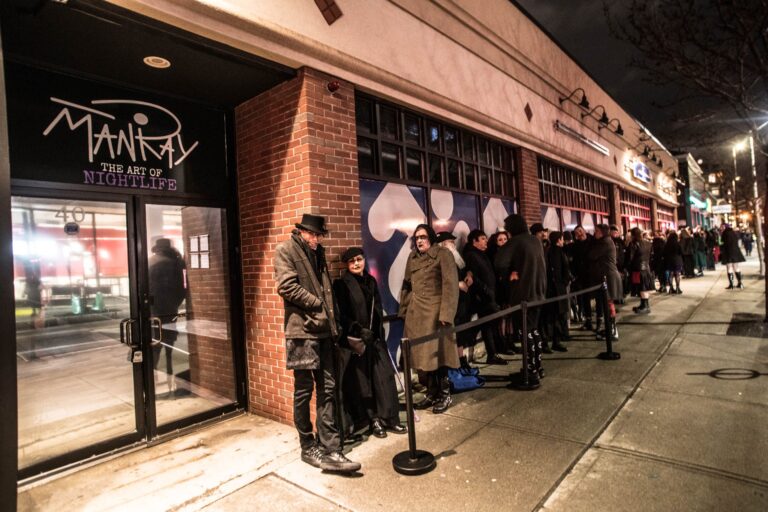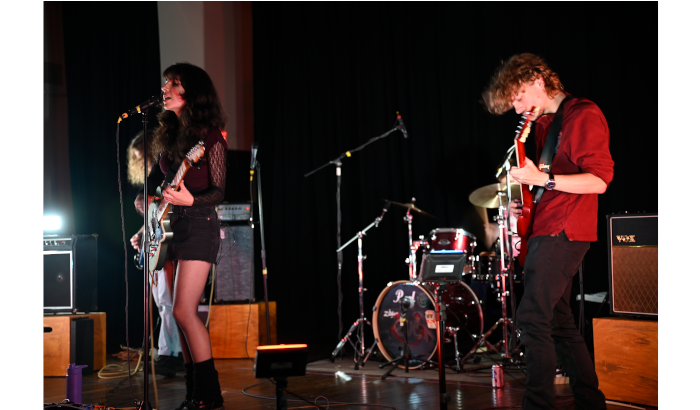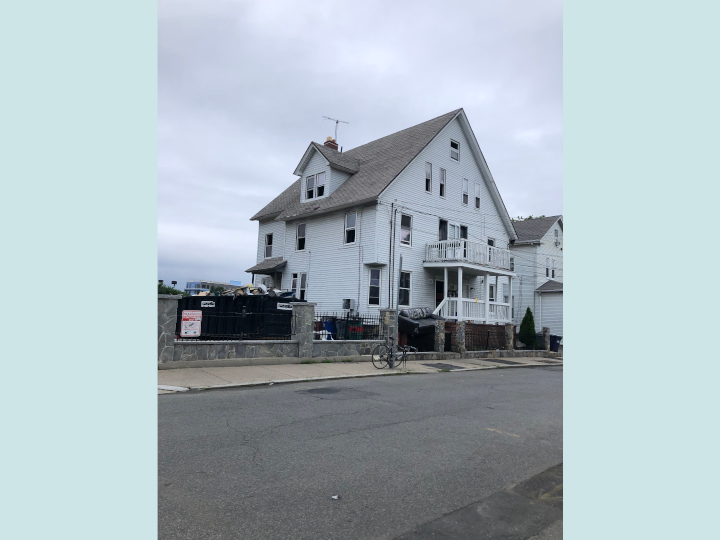Amid the MFA rebrand, the legacy institution offers Boston-area teen artists a new type of internship
For Boston high school students wanting a head start on their budding artistic careers, the Museum of Fine Arts Teen Programs are an attractive option.
At minimum wage—a saving grace as many art internships go unpaid—students can participate in one of the three internship programs the MFA offers: the STEAM Team, a cross-development program connecting the arts to math and tech; the Curatorial Study Hall, which offers hands-on exhibit curation and design; or the Teen Arts Council, which engages teens to organize museum events to attract a younger demographic.
Earlier this spring, the MFA hosted a guided tour for NBA basketball player for the Celtics Jaylnn Brown and teens from his non-profit the 7uice Foundation, which aims to “bridge the opportunity gap for youth in traditionally underserved Black and Brown communities.”
Logan Phesay, 17, is a senior at Boston Latin, joined TAC this summer as an intern. He works at the museum twice a week giving guided tours, attending career development workshops and, of course, making art. Phesay is an artist himself—this past spring, the Boston Public Library displayed his painting “My Mother’s Lillies” as part of an art competition that allowed Boston high schoolers to submit their pieces to be shown in the Copley branch of the Boston Public Library.
“[The staff at the MFA] are extremely helpful,” said Phesay. “I went into it with a focus on trying to make these connections. I know the fashion and Islamic arts curators pretty well.”
Having connections is a leg up for young artists trying to break into a difficult field. Andrea MacKay, a recent MassArt grad from Waltham, described having a professional mentor as life-changing.
“My high school pottery teacher, Mrs. Robinson, was a huge influence on my being as an artist,” said MacKay. “She taught me you can be an artist and still provide for yourself. It’s not a sentence to poverty and you won’t starve.”
Another part of Phesay’s internship with TAC is to come up with a campaign for the director of the Museum of Fine Arts, Matthew Teitelbaum, that would encourage young people to patronize the museum and foster an interest in the arts. Phesay says that while the rebrand was a good start, more can be done by the museum.
“Right now, we have a lot of old people because it’s a very classical and stubborn museum. It’s very obvious that the rebrand was not to be more inclusive but the hope to get more general approval,” Phesay said, referring to the 2020 rebrand campaign that aimed to “remind all Bostonians that its spaces and collections are for everyone, not just the elite,” according to the Creative Review.
Legacy art institutions like the MFA historically have been exclusive to the rich and white. According to the 2022 Art Museum Staff Demographic Survey—conducted by Ithaka S+R with support from the Mellon Foundation and in partnership with the American Alliance of Museums and the Association of Art Museum Directors—there is significant underrepresentation of Black, Latino, Indigenous, Asian, and other ethnic minorities in museum leadership. Notably, “[e]ven as new hiring shows dramatic progress in the diversification of these roles, still only 20% of museum leadership and conservation staff are [people of color].”
Having diverse leadership of not only race but also gender, sexuality, and age impacts the curation process and exhibits of museums. Phesay said he thinks the MFA should prioritize pushing artists that come from underrepresented backgrounds, such as LGBTQ+ artists, self-taught artists and artists of all ethnicities.
“The Islamic arts exhibition is so small [at the MFA], it’s just one hallway to fit a whole religion that has so many branches and history. So it seems unfair when we have whole rooms for people like Monet,” he said. “It’s important to have more youthful opinions.”
MacKay said she agrees that making art institutions free and accessible will encourage young people to engage with the arts. She proposed an arrangement that would bring the art directly to younger people.
“Having more open studio days on campuses or pop-up art events would be such a nurturing artistic experience and a great way to expose people to different art mediums,” said MacKay.
Phesay and the rest of his TAC group plan to propose additional methods to solve the demographic problem to the director of the MFA next spring, focusing on inclusivity and diversity. With programs like TAC that listen to the voices of young artists the MFA and the city of Boston can achieve an environment where artists flourish.
This article was produced for HorizonMass, the independent, student-driven, news outlet of the Boston Institute for Nonprofit Journalism, and is syndicated by BINJ’s MassWire news service. A version of this story also ran in the Berkeley Beacon, the Emerson College student newspaper.
Niya Doyle is a HorizonMass reporter and a recent graduate of Boston University. She loves music, cats, and baking. Disclosure notice: Doyle is personally connected to the subjects interviewed for this article.

